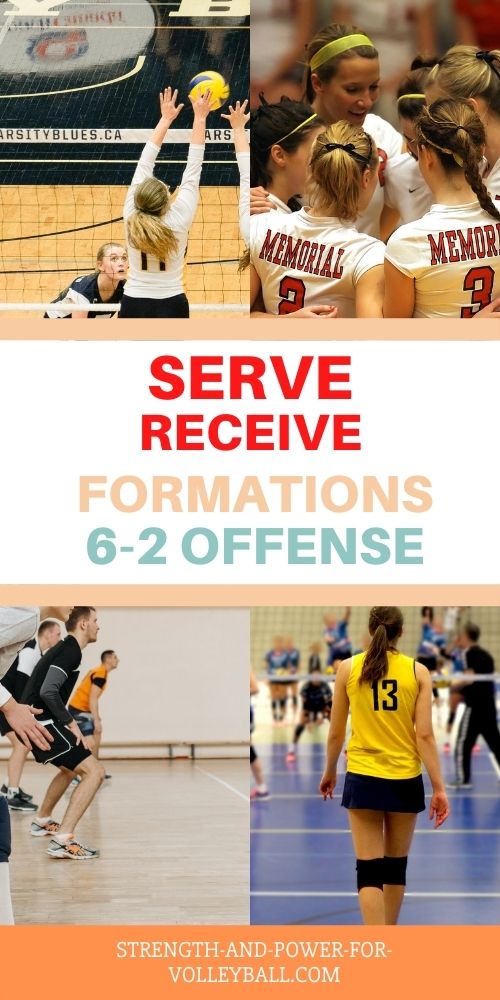6-2 Serve Receive
Rotations for Running a 6-2 Offense
6-2 serve receive offensive system is popular because of the many options of how to line up on the court. In a 6-2, you have two setters so it's much easier to adjust the teams line up on the court than when running a 5-1.
For example, in a 6-2 volleyball offense, a team has 2 setters and 6 hitters. If a team get's stuck in a rotation, they can change their formation so the other setter can set.
Because of this flexibility, and the fact that you always have 3 attackers attacking on the front row, the 6-2 is probably the most common offensive system in volleyball.
Basic strategies for a 6-2 serve receive are...
Setter lines up near the target area
The setter should line up on the court in the most convenient way to get in position to set. For example, if the setter is Left Back, they should line up as close to the middle of the court as possible. Also, the setter should come out of zone 1 to set as much as possible.
Have your best passers take the serve
Most teams have players that can pass better than their teammates. Running an offense can be much easier if your team lines up so your best passers receive the serve.
Take your attackers out of the 6-2 serve receive
If your attackers are forced to receive the serve, it may be much harder to run an effective offense. For example, after passing, the attacker will have to get in position to approach and hit.
In the following examples of 6-2 serve receive rotations, the Outside Hitters (OH) are the teams primary passers. If your team has a libero or Defensive Specialists (DS) that come in to play for the Middle Hitters (MH), then you would adjust your positioning accordingly.
Important Note:
| No tactical considerations were made in designing these serve-receive patterns. In these formations you'll notice the middle hitter is always following the setter. This isn't always best. In fact, it's more common for the outside hitter to follow the setter. |
Volleyball Rotations - Setter in Zone 1
We now have a new Setter. The new setter is in zone 1. The setter pushes the Middle Hitter up to the net. The Outside Hitter that is Middle Front backs up to pass. The Outside Hitters need to be careful not to overlap each other.
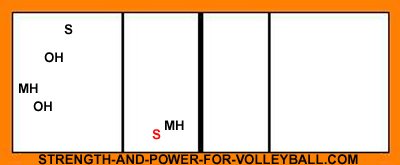
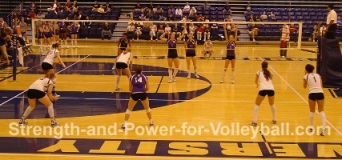
Right Front player backs up to pass, with the Setter coming out of Right Back.
Volleyball Rotations - Setter in Zone 6
The back row setter is in zone 6. The setter pushes the other setter up to the net. The Outside Hitter that is Right Front backs up to pass.
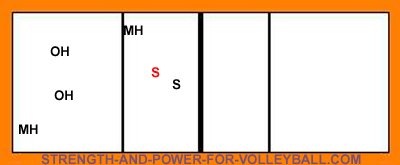
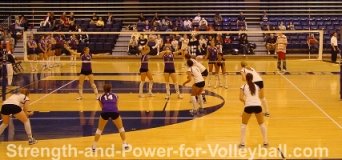
Setter pushes the Middle Front up to the net and lines up between the other two back row players (libero and Right Back).
Volleyball Rotations - Setter in Zone 5
The back row Setter is in zone 5. The Setter pushes the Outside Hitter up to the net. The Middle Hitter that's Middle Front (zone 3) backs up to pass. The setter can come over close to the Middle Hitter that is Middle Back (in order to be closer to the target area).
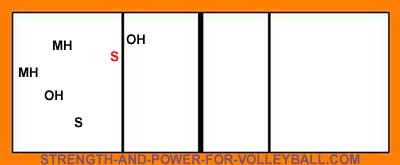
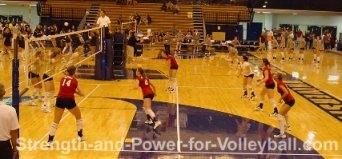
Setter is coming from Left Back. The Setter comes over to the the Middle Back player to be closer to the target position at the net.
Volleyball Rotations - Setter in Zone 1
We now have a new Setter. The new setter is in zone 1. The setter pushes the Middle Hitter up to the net. The Outside Hitter that is Middle Front backs up to pass.
Again, the Outside Hitters need to be careful not to overlap (Middle Back player overlapping Middle Front player).
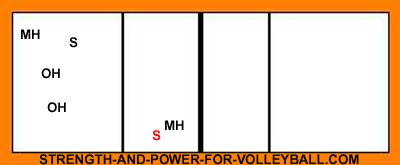
Volleyball Rotations - Setter in Zone 6
The back row setter is in zone 6. The setter pushes the other setter up to the net. The Outside Hitter that is Right Front backs up to pass.
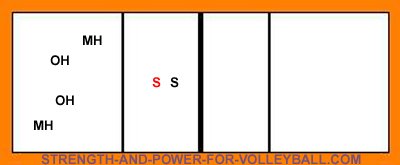
Volleyball Rotations - Setter in Zone 5
The back row Setter is in zone 5. The Setter pushes the Outside Hitter up to the net. Assume the Middle Hitter that's on the front row is a very weak passer. The setter that is front row backs up to help out passing.
Again, the Setter setting comes over to the Middle Hitter that is Middle Back to be closer to the target area.
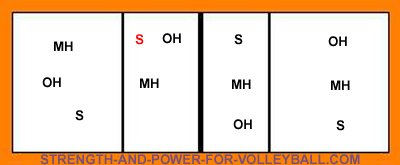
Remember, these are just examples of 6-2 serve receive rotations. Depending on who your best passers are (Outside Hitters, Middle Hitters, etc.) you will need to adjust your receive formation.
You may also decide to use a libero. All these factors need to be considered when designing an effective serve receive.
If you enjoyed these tips and would like to keep it close to you at any time, just save this pin to your Pinterest Volleyball Training Board.
Volleyball › Volleyball Strategies › 6-2 Serve Receive
